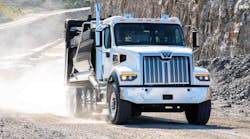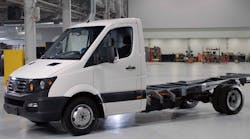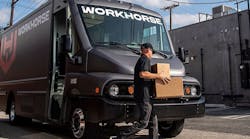When it comes to fleets’ strategy on purchasing trucks, economic growth, fuel economy, regulatory effects, and the long-term driver supply are the main factors, according to ACT Research president Kenny Vieth. And for the most part, things are looking pretty good for the trucking industry through 2016.
During Fleet Owner’s July 8 webinar, “Navigating Demand for Heavy Commercial Vehicles in an Economic Rebound,” Vieth presented the firm’s outlook for the remainder of this year and into 2016.
“I think it’s a good time to be someone who owns trucks,” Vieth said. “We’re on pace in North America for the second-best Class 8 sales of all time, and 2015 will be the best all-time tractor sales year.”
Regarding the overall economy, Vieth said, “This is a very good year.” He noted that even with the stock market shutdown on Wednesday and the economic turmoil in Greece, the U.S. is stable.
Here, job creation is “decent,” and for consumers of oil, “prices are great,” he said.
According to data collected by ACT Research, fleets replace vehicles in cycles – about every 10 years as trucks get older. When it comes to replacing commercial trucks, currently, according to ACT, the total Class 8 population has just over 2 million units, which grew 5% from 2003 to 2014. But over that same period of time, the U.S. economy grew by 28%.
“We’re doing all that work with basically the same number of trucks,” Vieth said, adding that the market is strong now because carriers are making record levels of profits. “We like to say truckers use trucks to haul freight. Truckers buy trucks to make money. If they’re not making money, there is not a lot of impetus to buy trucks.”
When it comes to used trucks, Vieth mentioned one of the main reasons the prices are so high right now is because the industry is still recovering from shoddy used sales numbers just after the recession. He added there also was a shortage of late model equipment.
Regarding fuel economy, new is best, he said, noting newer vehicles get “great” fuel economy. At the end of 2014, he said, nearly 70% of vehicles were getting less than 6 miles per gallon. He said newer vehicles could end up saving fleets around 4,200 gals. of fuel per year, or around $13,000.
Recently, the EPA announced its targets for Phase II of the Greenhouse Gas (GHG) standards. The major highlight is a 32% decrease in GHG emissions by 2027. That could mean an additional cost of $12,000 to modify Class 8 trucks to meet the new requirements. However, Vieth said those initial improvements will correlate to a 32% to 33% savings in fuel overall.
Later this year, the FMCSA is set to roll out an electronic logging device (ELD) mandate, which Vieth said fleets would need to be in full compliance with two years later.
Vieth believes 2015 will be another good year for freight and fleet profits. ACT projects:
- Better economic growth in key freight sectors
- Rising freight rate environment
- Lower energy prices likely to persist
- Favorable business conditions into 2016 (possibly beyond)








